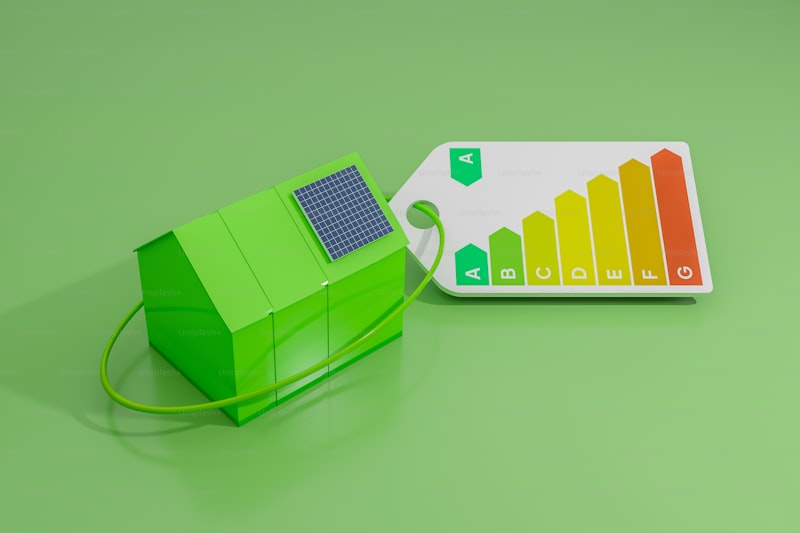Renewable energy technologies such as solar and wind power have emerged as game-changers in the quest for sustainable energy solutions. Unlike traditional fossil fuels, renewables harness natural resources like sunlight and wind to generate electricity without depleting finite reserves. This shift not only reduces greenhouse gas emissions but also enhances energy security by diversifying our sources.
Moreover, the integration of smart grid technologies is optimizing the efficiency of energy distribution networks. These grids employ digital communication technologies to monitor and manage electricity flow in real-time. By doing so, they enable utilities to respond dynamically to changes in demand and supply, thereby reducing wastage and operational costs.
Energy storage systems represent another frontier in technological innovation within the energy sector. Batteries and other storage solutions are crucial for storing excess energy generated during peak production periods. This stored energy can then be released during times of high demand or when renewable sources are not actively producing electricity, ensuring a reliable and stable power supply.
Artificial intelligence (AI) and machine learning are also making significant inroads into energy management. These technologies analyze vast amounts of data to optimize energy usage patterns, predict maintenance needs, and even automate decision-making processes. By continuously learning from data inputs, AI systems can fine-tune operations for maximum efficiency and cost-effectiveness.
Furthermore, the rise of electric vehicles (EVs) is reshaping the transportation sector while also impacting energy demand. EV technology relies heavily on advancements in battery technology and charging infrastructure, both of which are closely intertwined with developments in the broader energy sector.
Harnessing the Future: How Tech Innovations Are Powering the Energy Revolution
One of the most groundbreaking advancements is the development of solar power technology. From massive solar farms in the desert to sleek panels on residential rooftops, solar energy has transformed from a niche interest to a mainstream solution. The efficiency of solar panels continues to improve, making them more accessible and cost-effective than ever before. It’s not just about generating electricity anymore; it’s about doing it sustainably and efficiently.
Another game-changer is energy storage solutions. Batteries have long been the Achilles’ heel of renewable energy, but thanks to innovations in battery technology, this is rapidly changing. Lithium-ion batteries, made famous by electric vehicles, are now being scaled up for use in storing solar and wind energy. Imagine storing excess energy generated during sunny or windy days to use during calm or cloudy periods—it’s like having a reserve tank for electricity.
The Internet of Things (IoT) is also playing a pivotal role in the energy revolution. Smart grids, equipped with IoT sensors and AI algorithms, can predict energy demand more accurately, optimize distribution, and even detect and respond to faults in real-time. This means fewer blackouts, more efficient energy use, and ultimately, lower costs for consumers.
But perhaps the most exciting aspect of the energy revolution is how it empowers individuals. Innovations like home energy management systems allow homeowners to monitor and control their energy usage in real-time, optimizing for cost savings and environmental impact. It’s about giving consumers the tools and knowledge to be active participants in the energy ecosystem.
From Grid to Green: Technology’s Role in Shaping Sustainable Energy Practices
One of the key advancements is in the realm of solar energy. Solar panels have evolved from niche installations to mainstream solutions, thanks to technological innovations that have made them more efficient and affordable. These panels harness the sun’s abundant energy, converting it into electricity with minimal impact on the environment. Imagine rooftops adorned not just with tiles but with panels that silently generate power, reducing our dependence on fossil fuels.
Wind power is another area where technology has played a transformative role. Advanced turbines now dot landscapes, harnessing gusts of wind to produce clean energy. The design of these turbines has become sleeker and more efficient, capturing even the gentlest of breezes. It’s like nature herself has become a partner in our quest for sustainability, as these turbines spin quietly in fields and offshore locations, powering homes and industries alike.
But it’s not just about generating green energy; technology has also improved how we store and distribute it. Energy storage systems, such as advanced batteries, allow us to save excess energy generated during sunny or windy days for use when the weather is less cooperative. This means a more stable and reliable energy supply from renewable sources, reducing the need for backup from traditional power plants that burn fossil fuels.
Moreover, smart grids are transforming how electricity is managed and distributed. These grids use real-time data and analytics to optimize energy usage, directing power where it’s needed most efficiently. Picture a network that responds intelligently to demand fluctuations, ensuring that energy is used wisely and wastage is minimized.
Smart Energy: How IoT and AI Are Revolutionizing Power Distribution
Imagine a world where electricity not only flows reliably but does so with precision, adapting instantaneously to demand fluctuations and optimizing consumption patterns. This isn’t science fiction; it’s the transformative power of IoT (Internet of Things) and AI (Artificial Intelligence) reshaping the landscape of power distribution.

In simple terms, IoT refers to interconnected devices that collect and exchange data over the internet. When applied to energy grids, IoT-enabled sensors monitor everything from voltage levels to consumption patterns in real-time. This data isn’t just numbers on a screen; it’s actionable intelligence that allows utilities to predict and preempt faults, ensuring uninterrupted power supply.
AI takes this a step further by analyzing massive datasets generated by IoT devices. Picture AI algorithms as diligent detectives, sifting through terabytes of information to identify inefficiencies or potential failures before they happen. By learning from past patterns, AI can optimize energy distribution, directing power precisely where and when it’s needed most.
Think of IoT and AI as partners in a dance of efficiency and sustainability. Just as a skilled conductor guides an orchestra, IoT coordinates the various components of the electrical grid, ensuring each device plays its part harmoniously. Meanwhile, AI acts as the virtuoso soloist, improvising solutions in real-time to keep the performance flawless.
The benefits extend beyond reliability. By reducing energy wastage and optimizing distribution, IoT and AI help cut down on greenhouse gas emissions. It’s not just about keeping the lights on; it’s about doing so responsibly, with an eye towards preserving our planet for future generations.
As these technologies continue to evolve, so too will our ability to harness cleaner, more efficient energy sources. From solar farms to wind turbines, IoT and AI enable us to integrate renewable energy seamlessly into the grid, maximizing its impact and minimizing its intermittency.
The fusion of IoT and AI marks a pivotal moment in the evolution of power distribution. It’s a shift from reactive to proactive, from conventional to cutting-edge. With every watt saved and every carbon footprint reduced, we inch closer to a future where smart energy isn’t just a choice but a global standard.
Beyond Fossil Fuels: Tech Solutions Paving the Way for Renewable Energy Dominance
Imagine a world where rooftops aren’t just sheltering homes but harnessing the power of the sun through photovoltaic panels, converting sunlight into electricity with remarkable efficiency. This isn’t science fiction; it’s solar technology at its finest, offering homes and businesses alike the ability to generate their own power sustainably. The sun, our ultimate celestial powerhouse, is now a direct source of energy for everyday needs, reducing dependence on finite fossil fuels.
But it’s not just solar power that’s transforming our energy landscape. Wind energy, once limited to picturesque windmills dotting the countryside, has evolved into towering wind turbines that harness powerful gusts to generate electricity on a massive scale. These sleek giants stand as symbols of innovation, capturing renewable energy from the atmosphere and converting it into a reliable power source for communities worldwide.
Furthermore, advancements in battery storage technology are overcoming one of the biggest challenges of renewable energy: intermittency. Energy storage systems are akin to gigantic, high-tech reservoirs, storing excess energy generated during peak times and releasing it when demand spikes or when the wind isn’t blowing, ensuring a steady supply of electricity around the clock.

The journey towards renewable energy dominance isn’t just about technological innovation; it’s also about reshaping our infrastructure and mindset. Electric vehicles (EVs) are a prime example, revolutionizing transportation by replacing fossil fuel-powered engines with clean, electric motors. Charging stations are cropping up like oases in a desert, making it easier for drivers to choose a greener way forward.
The Rise of Energy Storage: How Batteries and Nanotech Are Reshaping Power Management
Batteries, once confined to powering small gadgets and vehicles, have now surged into the spotlight as pivotal players in the quest for sustainable energy solutions. Their ability to store electricity efficiently has made them indispensable in the integration of renewable energy sources like solar and wind into the grid. Imagine solar panels on rooftops capturing the sun’s energy during the day and storing it in advanced batteries for use at night, ensuring a steady supply of clean power around the clock.
Enter nanotechnology, the science of manipulating matter at the atomic and molecular scale. This field has unleashed a wave of innovations that are enhancing the performance and longevity of batteries. By engineering materials at such minuscule levels, researchers are creating batteries that charge faster, last longer, and are safer to use. It’s akin to fitting a powerful engine into a tiny sports car – nanotech is enabling batteries to punch above their weight, pushing the boundaries of what was once thought possible in energy storage.
The implications of this synergy extend far beyond renewable energy integration. Industries ranging from healthcare to transportation are poised to benefit immensely. Imagine electric vehicles capable of traveling greater distances on a single charge, or medical devices powered by ultra-efficient batteries that can be implanted for longer durations without needing replacement.
As this symbiotic relationship between batteries and nanotechnology continues to mature, the future of power management looks increasingly promising. It’s not just about meeting current energy demands; it’s about paving the way for a sustainable tomorrow where clean energy is abundant and accessible to all.
Frequently Asked Questions
What are the implications of blockchain technology on energy trading and management
Explore the impact of blockchain technology on energy trading and management, including enhanced transparency, decentralized energy markets, and streamlined transactions. Understand how blockchain can optimize energy supply chains, enable peer-to-peer trading, and promote renewable energy integration.
What are the key technologies driving transformation in the energy sector
Discover the key technologies shaping the energy sector’s evolution. Learn about innovations like renewable energy sources, smart grids, energy storage solutions, and digital technologies that are driving efficiency, sustainability, and resilience in the industry.
What role does AI play in optimizing energy production and consumption
Learn how AI enhances energy production and consumption efficiency through predictive analytics, automation of grid management, and optimization of renewable energy sources.
How are smart grids revolutionizing energy distribution
Learn how smart grids are transforming energy distribution with advanced technology and real-time data management. Discover their role in optimizing power delivery, enhancing reliability, and integrating renewable energy sources efficiently.
How is renewable energy benefiting from technological advancements
Learn how renewable energy is leveraging technological advancements to increase efficiency, reduce costs, and enhance sustainability through innovations in solar panels, wind turbines, energy storage systems, and smart grid technologies.


